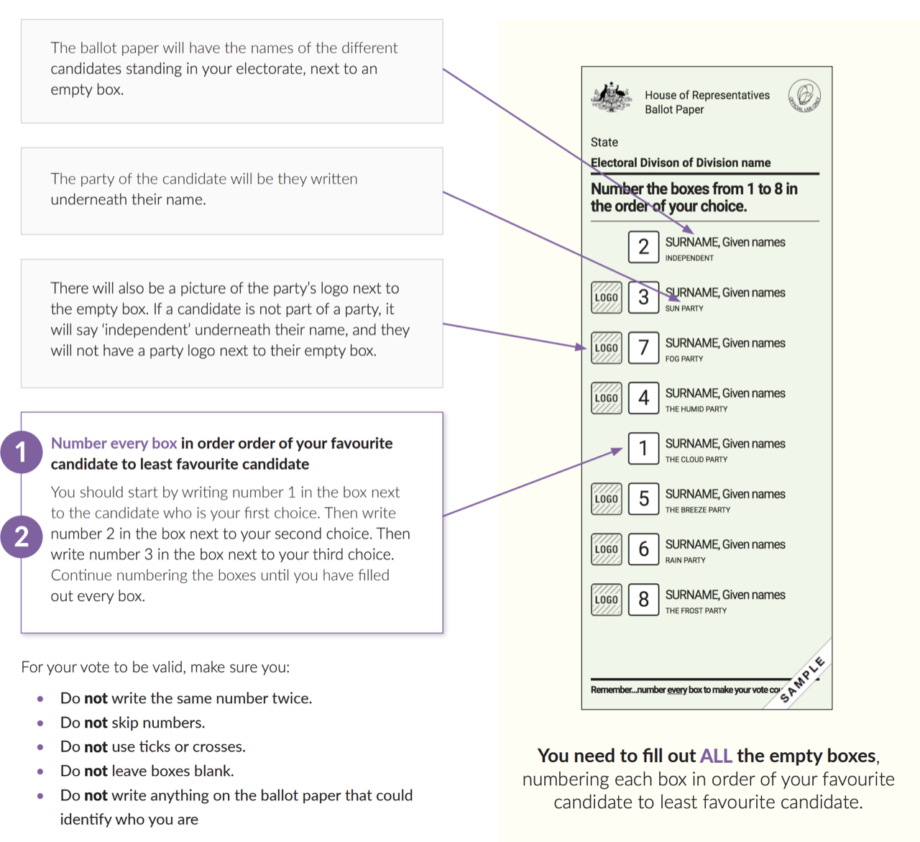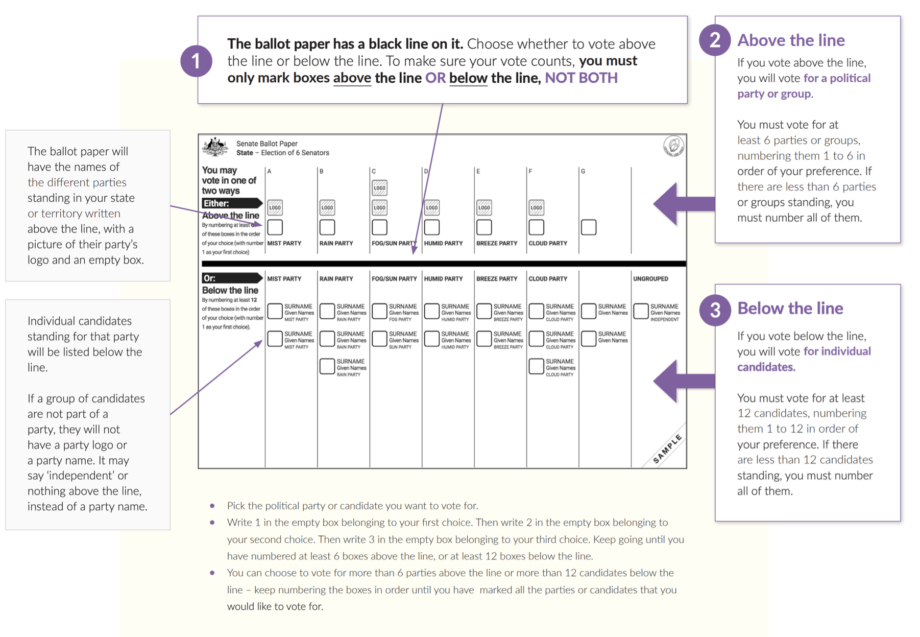Senate
Each State is represented by twelve Senators and each Territory by two Senators.
State Senators are elected for a six-year period. At each normal election, half of the state Senators are elected, meaning you will vote for six Senators if you live in a State. Sometimes there is a “double dissolution election” and every Senator will be elected, meaning you will vote for twelve Senators. For more information about double dissolution elections, visit the AEC website.
Territory Senators are elected for three-year periods. If you live in a Territory, you vote for two Senators at every election.
Australia uses a proportional representation system in the Senate. This means that seats are allocated to candidates according to the number of votes they receive. Candidates need a certain quota of votes to be elected.
Instead of just voting for one candidate, you should rank candidates or parties in order of how you feel about them.
You can vote above-the-line or below-the-line. See the example below.
The way votes are counted in the Senate is complicated and can take a lot of time.
First preference votes (the candidate you marked as number 1) are counted first. Any candidate who has received the quota from these votes is elected.
If they have received more votes than the quota (surplus votes), the second preferences (the candidate marked as number 2) of all their votes will be counted, but at a reduced rate. Other candidates may reach the quota from this and be elected.
If there are still Senate spots left unfilled after this process, then the candidate with the lowest number of votes is eliminated and their votes will be distributed to the other candidates based on the voter’s preferences.
If a candidate achieves a quota through this process, they will be elected. If the elected candidate has surplus votes, the voter’s next preference will be transferred.
If there are still Senate spots left unfilled after this process, the candidate with the second least number of votes will be eliminated and their votes distributed based on the voter’s preferences.
This continues until enough candidates receive the quota of votes required to be elected.
The proportional representation system allows a voice for minority parties in decision making in Australia.
You can find out more about how Senate votes are counted here.
Find more information about the proportional representation system on this poster.



